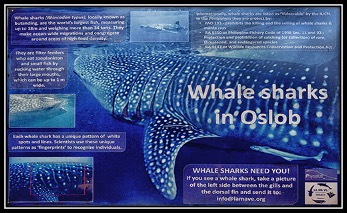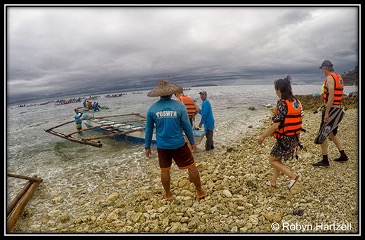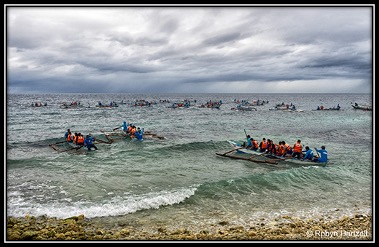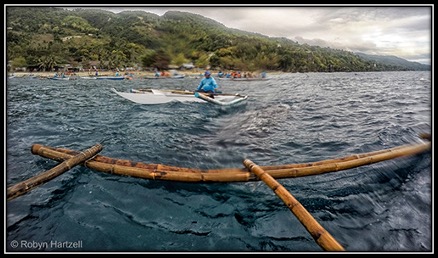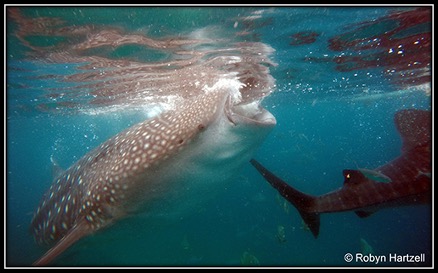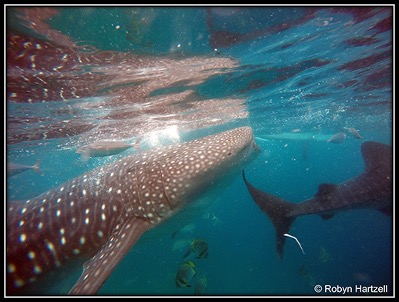Should You Swim With The Whale Sharks In Oslob?
- Robyn Hartzell
- Dec 30, 2019
- 5 min read

Swimming with whale sharks, a divers dream, but there is a lot of controversy about swimming with the whale sharks in Oslob. Many divers refuse to swim with them in Oslob because they feel the conditions are unfair. I originally wasn’t going to go. I didn't want to condone the behavior. I changed my mind after talking to some local and expat dive shops and hearing their take. I decided to check it out and experience it myself and try to keep an open mind while I was there.
SHARK FINNING IN THE PHILIPPINES
Before this tiny town became a popular area to swim with the whale sharks, they were being harvested and their fins sold for income. Shark finning is illegal in the Philippines now, but it wasn’t for some time, and the whale shark populations were dwindling. The act of shark finning is when a fisherman catches a shark then slices of its fins and drops the rest of the body, alive, into the water to die. The sharks aren’t used for their full body meat, just the fins. Shark Fin Soup is very popular in Asia and the fins fetch a high dollar ticket when exported out. Many chefs, like Gordon Ramsey, have promoted not putting fins in shark fin soup. The fins don’t have a taste and have just become this commodity that has drove demand over the years.
HOW SWIMMING WITH THE WHALE SHARKS IN OSLOB STARTED
Local fishermen use shrimp as bait to catch fish, and the whale sharks were drawn to the shrimp and stuck around the boats. A local dive shop owner encouraged the fishermen not to fin them. He said to bring them into the bay by feeding them krill where they could share them with the community and tourists alike. The small town of Oslob went from not being able to send their children to school and living in shacks with no bathrooms to now where children have education, and families live in homes with plumbing and electric. If it weren’t for the sharks, this small town would still be struggling.
A foreign dive shop owner, from the UK, talked to me about not supporting them for years, in an effort to do their part in helping to put an end to it. He realized that divers were just going to other shops when his shop refused to go. His shop now offers dive trips to Oslob again, but his staff gives a thorough briefing along with educating his guests about the whale sharks and Oslob's history with them.
MY EXPERIENCE SNORKELING WITH WHALE SHARKS IN OSLOB
My first impression upon arriving was that it wasn’t so bad, organization wise. Once there you are ushered to get your ticket (snorkeling is 1000 pesos and diving is 1500 Pesos). You then head off to another area to listen to a briefing on the do’s and don’ts of swimming with the whale sharks. I like that they have a briefing, but not everyone attends nor does everyone listen to what they are saying. The briefer did hit all the major points: stay at least 6m away from the whale sharks, don’t use sunscreen, and no swimming off from the boat to chase after them.
Once the briefing was over, I waited for my number to be called then headed out to the boats. The boats are regulated, and there weren’t more than 20 boats out at a time when I went. The boats were also all daisy chained up in a line, so there was some organized fashion with the boats, they’re not just a free for all in the Bay. Once chained up to your neighboring boat, you’re allowed to get in the water, staying next to the boat to wait for the whale sharks to pass you.
Here’s where the mixed emotion comes in. There are a few smaller boats in the water with a single fisherman on each, and he is hand-feeding the whale sharks buckets of krill. There tends to be one whale shark per boat, and they just follow the boat up and down the path of the tourists, eating the krill. In my eyes, this is not really an authentic experience. The whale sharks aren’t concerned about anything other than getting fed by the fishermen. They’re basically pets without leashes following their owner.
WHY FEEDING THE WHALE SHARKS IN OSLOB IS HURTING THEM
What I first noticed is none of the boats have propellers which are great, the whales won’t get chewed up by coming in contact with them, but what I witnessed is the whale sharks still had scrapes and cuts on them. The theory is because these sharks are used to being fed, they are going up to any boat once they are outside the bay thinking they’re going to be fed and are getting hit with the boat propellers.
Feeding the whale sharks is also breaking their migratory patterns. A local dive shop said that it’s the smaller whale sharks that stay in the bay and only for a few years then head off, but there’s not much data proving this.
FINAL THOUGHTS
I was surprised to see there were more local tourists here than foreign tourists. Since the whale shark tourism isn't going away anytime soon, I feel it’s a great way for the local tourists to see what’s in their waters and learn how to protect them and why they’re so important. They are also supporting the locals, giving them a better life. For the foreigners, I felt like I was at Disneyland. Many were screaming like they were on a wild ride. You’re not offered fins unless you bring them. I was the only one on my boat with fins, which helped in getting underneath the manic tourists. Most of the people in the boat, once in the water, were kicking and screaming when the whale sharks got close, and some even kicked them. Not really my cup of tea.
I honestly only spent about 10 minutes in the water with them. Absorbing what was going on around me, I took a bunch of pictures, yelled at a few tourists on my boat who were getting too close and generally just freaking out, and then got out. I honestly don’t know if paying the extra money to dive with them would have been any different.
As a dive professional, I believe, this is not the way to see these beautiful creatures. When you see one of these beauties in the wild, it’s like you are given a gift. Going to a place like Oslob where you know you’re guaranteed to see them, it takes the thunder away from seeing them in their natural environment. This was my first time seeing them and now more than ever, I want to see them when it’s not a guarantee, but when one randomly shows up on one of my dives. That will be an experience of a lifetime and one to remember and cherish.



